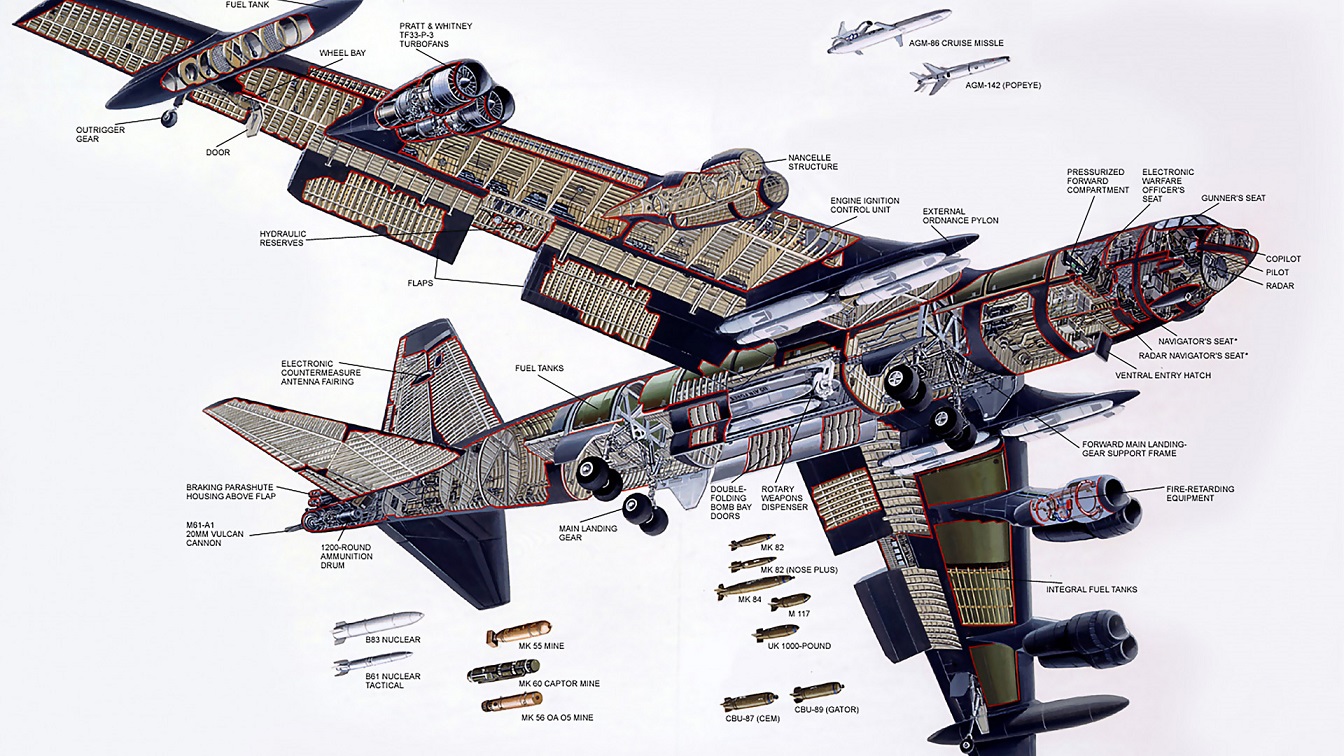Earlier this month, the 49th Test and Evaluation Squadron and 340th Weapons Squadron jointly created an integrated team designed to further develop tactics for un-fielded B-52 Stratofortress systems.
The commander of the 49th TES noted that “The B-52 is the foundational part of strategic deterrence; we need to start at a full sprint to keep pace in the ever-changing geostrategic environment. The synergies gained by this WPS and OT endeavor will help ensure we do just that.”
Although the B-52 has been in service with the U.S. Air Force for many decades, the platform is expected to undergo expansive upgrades in the future that will require training and also “cultural change” in the responsibilities of the B-52 aircrew.
A brief history of the Stratofortress
The U.S. military recognized the need for an advanced strategic bomber able to operate without dependence upon bases controlled by other countries following the Second World War. Some of the service’s requirements for a new bomber included being able to cruise at roughly 480 km/h with a combat radius of 5,000 miles. By the late 1940s, the Air Force received proposals for these specifications from Consolidated Aircraft, Boeing, and Glenn L. Martin Company. Boeing’s model 462 was ultimately selected as the winner.
The airframe prototype was powered by six Wright T35 turboprops with a combat radius of more than 3,000 miles. Since it did not meet the Air Force’s exact requirements, Boeing later produced the Model 464. Over the years, the airframe manufacturer was also instructed to change the top speed of its airframe, in addition to its ability to carry a nuclear weapon, among other alterations.
The B-52 Stratofortress is more than six decades old
The first B-52 variant finally took to the skies during the mid-1950s, followed closely by the B-52B subsequent variant. Overall, 744 Stratofortresses were produced, with the last being a B-52H variant delivered in the early 1960s. Today, the 2nd Bomb Wing and 5th Bomb Wing fly roughly two-thirds of these airframes, while the remaining one-third remain in service with the 307th Bomb Wing. An additional 10 of these B-52s were sent to the Davis-Monthan Air Force Base “Boneyard” for early retirement.
Notably, the B-52 bomber can perform close-air support, strategic attack, offensive counter-air, air interdiction, and maritime operations. Equipped with targeting pods that enhance long-range target detection, the nearly 60-year-old platform possesses particularly sophisticated combat effectiveness in all weather conditions.
As detailed by Military.com, “The B-52 is capable of dropping or launching the widest array of weapons in the U.S. inventory. This includes gravity bombs, cluster bombs, precision guided missiles and joint direct attack munitions. Updated with modern technology the B-52 will be capable of delivering the full complement of joint developed weapons and will continue into the 21st century as an important element of our nation’s defenses.”
What about the new B-52J?
The B-52 is expected to remain an integral part of the Air Force for at least another couple of decades despite its old age. The upcoming B-52J variants will sport new Rolls Royce F130 engines and all airframes will be fitted with Raytheon’s AESA AN/APG-79 radar in addition to new navigation and communication systems. Considering all these upgrades, a dedicated “super squadron” is essential.
Maya Carlin, a Senior Editor for 19FortyFive, is an analyst with the Center for Security Policy and a former Anna Sobol Levy Fellow at IDC Herzliya in Israel. She has by-lines in many publications, including The National Interest, Jerusalem Post, and Times of Israel. You can follow her on Twitter: @MayaCarlin.
From the Vault
The Navy Sent 4 Battleships To Attack North Korea
‘Sir, We Hit a Russian Submarine’: A U.S. Navy Sub Collided with a Nuclear Attack Sub

